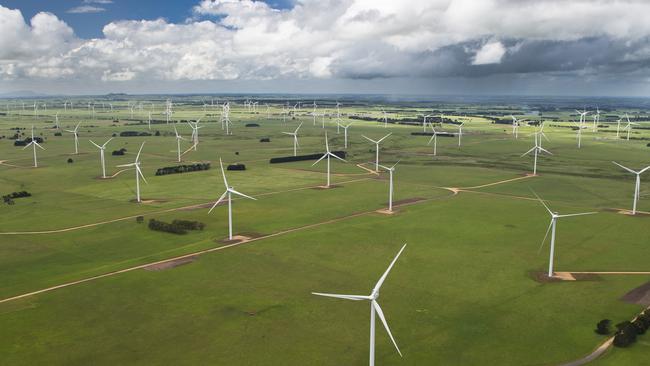$50bn to put wind in the sails of Business Council of Australia net-zero blueprint for 2030
Business Council of Australia blueprint for a net-zero emissions future calls for an ambitious 2030 target that would require Australia to lower its emissions from 615 million tonnes in 2005 to 479 million tonnes in 2030.

About $50bn of investment in renewable energy generation will be needed for Australia to meet a 2030 emissions reduction target of 46-50 per cent, with a “rapid transition” of the electricity sector to be driven by an increase in wind farms.
The Business Council of Australia blueprint for a net-zero emissions future calls for an ambitious 2030 target that would require Australia to lower its emissions from 615 million tonnes in 2005 to 479 million tonnes in 2030.
The BCA’s Achieving a Net-Zero Economy report argues about 61 per cent of the emissions reductions will need to come from the electricity sector, which accounts for a about a third of Australia’s carbon output.
The report says renewables need to account for 70 per cent of electricity generation by 2030, compared to 28 per cent now.
“About 30 gigawatts of additional renewable generation will need to be installed across Australia’s electricity system over the next decade,” the report says. “The costs ... could be in the order of $50bn.
“However, other significant capex requirements are also likely, including transmission and distribution network augmentation, and storage to provide system stability and security.
“To achieve this, we need a fourfold increase in renewable infrastructure build in the National Electricity Market over the next eight years, compared to the previous decade.”
The transport sector will need to reduce emissions by 15 million tonnes – 10 per cent of the reductions – by 2030.
The BCA says this will require 22 per cent of new cars to be electric vehicles by 2030, compared to the current projection of 7 per cent. At least 10 per cent of truck fleet would need to be hydrogen-fuelled by 2030.
The BCA calls for luxury car tax exemptions for low emissions vehicles, progressively tightening vehicle emissions standards, and phasing out fuel excise charges while introducing road congestion charges. It also calls for the federal government to use more electric vehicles in commonwealth fleet, the introduction of mandatory minimum reporting requirements on EV sales for car dealers, and more investment in charging infrastructure.
The BCA report says industry will need to contribute 24 per cent of the emissions reductions needed to hit the 2030 target.
This would be done through the electrification of processes, adoption of carbon-capture and storage technology, and an expansion of the Safeguard Mechanism that puts carbon limits on big emitters.
The BCA calls for the cap under the Safeguard Mechanism to be lowered from 100,000 tonnes of carbon a year to 25,000, with the system amended to give tradeable credits to companies that exceed their targets.
“Businesses in all emitting sectors of the economy would have an economic incentive to directly invest in reducing their own emissions, or purchase offsets from another party to satisfy their obligations under the proposed Safeguard Mechanism arrangements,” the report says.




To join the conversation, please log in. Don't have an account? Register
Join the conversation, you are commenting as Logout